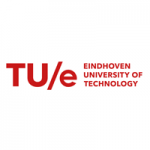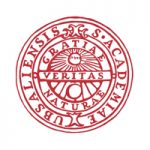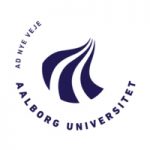项目介绍
Eindhoven University of Technology is an internationally top-ranking university in the Netherlands that combines scientific curiosity with a hands-on attitude. Our spirit of collaboration translates into an open culture and a top-five position in collaborating with advanced industries. Fundamental knowledge enables us to design solutions for the highly complex problems of today and tomorrow.
The mission of the Department of Electrical Engineering is to acquire, share and transfer knowledge and understanding in the whole field of Electrical Engineering through education, research and valorization. We work towards a ‘Smart Sustainable Society’, a ‘Connected World’, and a healthy humanity (‘Care & Cure’). Activities share an application-oriented character, a high degree of complexity and a large synergy between multiple facets of the field.
Research is carried out into the applications of electromagnetic phenomena in all forms of energy conversion, telecommunication and electrical signal processing. Existing and new electrical components and systems are analyzed, designed and built. The Electrical Engineering department takes its inspiration from contacts with high-tech industry in the direct surrounding region and beyond.
The department is innovative and has international ambitions and partnerships. The result is a challenging and inspiring setting in which socially relevant issues are addressed.
Job Description
EM Group, Department of Electrical Engineering, Eindhoven University of Technology
Department of Research and Development, The Antenna Company
Emerging information technologies will necessitate a significant increase in the data rates and capacity of wireless communication systems. Our society stands on the brink of a new era with the development of innovative concepts such as the Internet of Things, smart cities, autonomous driving, and smart mobility. This encourages the use of the millimeter-wave (mm-wave) frequency domain to support these new ideas, where much more signal bandwidth is accessible. The rapid increase in data rates is illustrated in the figure below, which shows the roadmap toward beyond 5G, i.e., 5G+. For 5G, the goal is to achieve data rates of up to 10 Gbit/s by utilizing the lower mm-wave spectrum (<40 GHz). For beyond 5G, even higher frequencies, well above 100 GHz, are anticipated.
(Beyond)-5G wireless communications will provide mobile devices a wired experience, providing users with high data rate and capacity, low latency, and high signal fidelity. Ongoing development for such experience includes signal processing, accessing techniques, and modulation techniques. Furthermore, breakthroughs in antenna array systems are equally important, especially for the anticipated use of mm-wave frequencies. Further integration at mm-wave frequencies presents a unique opportunity to use beam-steering phased-array antennas with massive MIMO technology. With the aid of enhanced electronic beamforming, it is possible to overcome limitations associated with the severe path loss experienced at mm-wave frequencies while supporting user mobility in the access links both in indoor and, especially, outdoor scenarios.
Outline of the program:
The Arrays5G program arises from a collaboration between Eindhoven University of Technology and The Antenna Company to develop innovative design methodologies and technical solutions to enable next-generation high-performance wireless networks and remote sensing applications.
PhD position on “Advanced Antenna Array Synthesis Methodologies”:
The research program focuses on advanced deterministic synthesis techniques for antenna arrays. These techniques address the complex, multidimensional, and nonlinear problem of antenna array pattern synthesis, offering advantages over traditional metaheuristic methods like genetic algorithms and particle swarm optimization. The deterministic approach, characterized by lower computational complexity and higher efficiency, involves evaluating the location and excitation coefficients of antenna elements while adhering to design constraints. The incorporation of AI enhances these techniques, allowing for more efficient handling of complex design requirements and constraints. This synergy between deterministic methods and AI is expected to lead to more effective and efficient antenna array designs, outperforming evolutionary methods in terms of speed, computational load, and possibly accuracy in conforming to design specifications. This research program would explore these advantages in depth, developing and validating new algorithms for antenna array synthesis that leverage the strengths of both deterministic methods and AI with an emphasis on the following aspects:
- Advanced Deterministic Synthesis Techniques: Investigating novel deterministic methods for antenna array synthesis, such as advanced iterative Fourier transform approaches, and exploring their computational efficiency and effectiveness in meeting assigned performance criteria.
- Integration with AI and Machine Learning: Examining how artificial intelligence (AI) and machine learning algorithms can be integrated with deterministic synthesis techniques to optimize antenna array design. This could involve developing AI-driven models to automate the synthesis process, enhance design accuracy, and reduce computational time.
- Comparison with Evolutionary Methodologies: Conducting comparative studies to assess the advantages of deterministic synthesis techniques over evolutionary methods, such as genetic algorithms, in terms of accuracy, speed, and reliability. This comparison can highlight the scenarios where deterministic methods are more suitable.
- Application in Emerging Technologies: Applying deterministic synthesis methods to design antenna arrays for emerging technologies like 5G and beyond, considering aspects like millimeter-wave communications, beamforming, and spatial filtering.
- CAD Tool Development: Developing sophisticated computer-aided design tools that incorporate deterministic synthesis algorithms to assist designers in creating efficient antenna arrays for various applications, including wireless communications and remote sensing.
This research program aims to push the boundaries of antenna array design by leveraging the precision and efficiency of deterministic methods, enhanced by AI, to meet the evolving demands of modern wireless communication systems.
Job Requirements
- Applicants should have, or expect to receive, a Master of Science degree or equivalent in a relevant electrical engineering or applied physics discipline.
- The selection is based on the candidates’ application documents in combination with their performance during the interviews and possible assignments.
- Besides good subject knowledge, emphasis will be placed on creative thinking, motivation, ability to work in a team, initiative to work independently and personal suitability for research training.
- An educational background in the areas of electromagnetic field theory, antenna design, antenna arrays, microwave engineering, and signal processing is preferred. Practical experience is considered beneficial.
- Proficiency in using scientific and engineering software packages such as CST Studio Suite, Python, Matlab, Mathematica, etc. are advantageous.
- Fluency in spoken and written English is essential.
Conditions of Employment
- A meaningful job in a dynamic and ambitious university, in an interdisciplinary setting and within an international network. You will work on a beautiful, green campus within walking distance of the central train station. In addition, we offer you:
- Full-time employment for four years, with an intermediate assessment after nine months. You will spend a minimum of 10% of your four-year employment on teaching tasks, with a maximum of 15% per year of your employment.
- Salary and benefits (such as a pension scheme, paid pregnancy and maternity leave, partially paid parental leave) in accordance with the Collective Labour Agreement for Dutch Universities, scale P (min. € 2,901 max. € 3,707).
- A year-end bonus of 8.3% and annual vacation pay of 8%.
- High-quality training programs and other support to grow into a self-aware, autonomous scientific researcher. At TU/e we challenge you to take charge of your own learning process.
- An excellent technical infrastructure, on-campus children’s day care and sports facilities.
- An allowance for commuting, working from home and internet costs.
- A Staff Immigration Team and a tax compensation scheme (the 30% facility) for international candidates.
Information
Do you recognize yourself in this profile and would you like to know more? Please contact
Dr. Diego Caratelli (diego.caratelli@antennacompany, d.caratelli@tue.nl) or
Prof. Bart Smolders (a.b.smolders@tue.nl)
Visit our website for more information about the application process or the conditions of employment. You can also contact HRServices.flux@tue.nl.
Are you inspired and would like to know more about working at TU/e? Please visit our career page.
Application
We invite you to submit a complete application by using the apply button. The application should include a:
- Cover letter in which you describe your motivation and qualifications for the position.
- Curriculum vitae, including a list of your publications and the contact information of three references.
We look forward to receiving your application and will screen it as soon as possible. The vacancy will remain open until the position is filled.
联系方式
电话: +31 (0)40 247 9111相关项目推荐
KD博士实时收录全球顶尖院校的博士项目,总有一个项目等着你!





